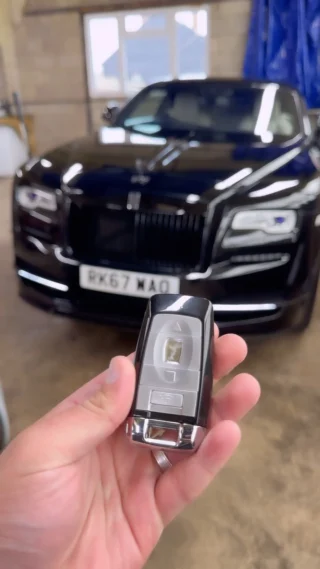Who's The World's Top Expert On Car Key Jammed?

Car Key Jammed: Causes, Solutions, and Preventive Measures
A car key jammed in the ignition is a typical problem faced by vehicle owners. The disappointment typically escalates when people are pushed for time or need instant access to their vehicle. This short article aims to supply thorough assistance on comprehending the causes behind a jammed key, prospective solutions to resolve the issue, and preventive steps to prevent recurrence in the future.
Comprehending the Causes of a Jammed Car Key
A car key might end up being jammed in the ignition for different factors. A few of these causes include:
| Cause | Description |
|---|---|
| Worn-out Key | A key that has become used could have a hard time to fit correctly within the ignition. |
| Ignition Cylinder Issues | Dirt, debris, or damage within the ignition cylinder can block the key. |
| Steering Wheel Lock | If the steering wheel is locked, it can avoid the key from turning or being eliminated. |
| Electrical System Malfunction | Malfunctioning electrical connections or issues with the ignition switch can cause problems. |
| Winter | Incredibly low temperatures can cause condensation to freeze within the ignition system. |
Determining the Problem
Before applying any solutions, it is vital to detect the issue clearly. The following checklist can assist in recognizing the underlying issue:
- Check the Steering Wheel: If the guiding wheel is locked, carefully turn it while trying to get rid of the key.
- Check the Key: Examine the key for indications of wear and tear, or flexing which might hinder appropriate performance.
- Evaluate the Ignition Cylinder: Look for visible particles or internal breakdowns that could be causing the jam.
- Temperature level Check: Consider the climate conditions. Is it abnormally cold, which could affect ignition performance?
Solutions for a Jammed Car Key
As soon as the source has been developed, a number of solutions can be used to resolve the jammed key issue.
Immediate Solutions
- Gentle Wiggling: Attempt to gently wiggle the key while trying to turn or pull it out. Avoid utilizing extreme force to avoid damage.
- Lubrication: Applying a percentage of graphite or silicone lubricant can assist loosen up a stuck key. Spray or insert it into the ignition cylinder carefully.
- Usage Pliers: If the key's head is accessible, utilizing pliers may supply the required grip to pull the key out without much force.
- Battery Disconnect: If the key is stubbornly stuck, detaching the vehicle battery for a few minutes may reset the electrical elements.
Long-lasting Solutions
If the problem persists or reoccurs frequently, consider the following actions:
- Key Replacement: If the key is broken, it may be needed to change it. Go to a locksmith or your car dealer for a brand-new key.
- Ignition Cylinder Replacement: In cases of severe damage or frequent jams, replacing the ignition cylinder itself might be required.
- Professional Assessment: When DIY attempts stop working, seeking support from an expert mechanic is advisable. They can diagnose and repair deeper concerns within the car's ignition or electrical system.
| Solution | When to Use |
|---|---|
| Gentle Wiggling | When the key is slightly stuck but seems functional. |
| Lubrication | If the ignition appears unclean or the key is difficult to turn. |
| Use Pliers | When the key head is available and there's an obvious grip. |
| Expert Assessment | When all DIY implies fail or when deeper mechanical/electrical problems are suspected. |
Preventive Measures
To avoid possible problems in the future, vehicle owners can utilize numerous preventative strategies:
- Regular Maintenance: Schedule routine evaluations of your vehicle's ignition system to make sure everything is functioning optimally.
- Key Care: Handle car keys with care, avoiding dropping them or exposing them to moisture and extreme chemicals.
- Temperature Management: Protect the car from extreme climate condition whenever possible. Consider using a garage for parking throughout severe cold or heat.
- Regular Lubrication: Regularly apply lubes to the ignition cylinder and key, helping prevent dust buildup and ensuring smoother operation.
Often Asked Questions (FAQs)
Q1: Can I utilize oil to oil my car key or ignition?
A1: It is not recommended to utilize oil, as it can draw in dirt and debris. Rather, use dry silicone or graphite-based lubes.
Q2: What should I do if my key breaks off in the ignition?
A2: If a key breaks off, do not try to remove the broken piece yourself. Look for assistance from a professional locksmith or mechanic.
Q3: Is it safe to use extreme force to attempt and remove a jammed key?
A3: No, using excessive force can damage the ignition cylinder or the key, leading to more considerable issues and possibly costing more in repairs.
Q4: How can I tell if my ignition cylinder requires to be changed?
A4: If you often experience key jamming, problem in turning the key, or consistent electrical problems in starting the vehicle, it may be time for a replacement.
A jammed car key can be an inconvenient and frustrating situation for any vehicle owner. By understanding remote key repair underlying causes, carrying out the best solutions, and embracing preventive measures, people can reduce the possibility of facing this problem in the future. When ignition key repair stops working, looking for professional help makes sure that the issue is effectively fixed, permitting you to go back to carefree driving.

